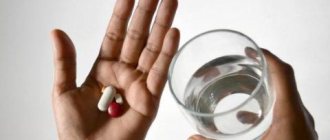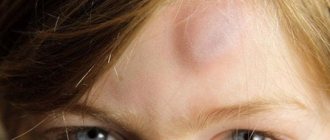- Etiology
- Varieties
- Symptoms
- Diagnostics
- Treatment
- Prevention
Cramps are involuntary muscle contractions that manifest as spasms. They arise suddenly and last for a fairly short time, but in some cases they repeat after a certain interval. They often cause severe pain in young children and the elderly. The lower extremities, especially the muscles of the calves and thighs, are most often affected by contractions. They often appear in the hand, back, abdomen and neck. Spasms of internal organs are much less common.
There are several types of muscle cramps, which differ in their intensity and duration. Both adults and children experience this unpleasant sensation. They must be treated in any case, as they reduce the quality of life, a person’s performance, and even affect his personal life.
In addition, there are some types of spasms that are specific to a particular age group. Thus, seizures in newborns are febrile, and in adults they are partial. The reasons are varied. Cramps can occur during sports, from high temperatures, or at night, when all muscles are most relaxed.
Typically, muscle spasms last from a few seconds to two minutes, but if their duration is much longer, they are repeated or the person loses consciousness, it is necessary to immediately take him to a medical facility. This should be done especially quickly with partial spasms, since they are a sign of epilepsy and can lead to suffocation.
general characteristics
Various convulsive syndromes rank third in terms of overall incidence in the population after cardiovascular pathology and diabetes mellitus.
They account for 20% of all neurological disorders. Pathological symptoms more often occur in children (up to 15 years) and old age. Cramps are felt as involuntary spastic contractions of skeletal muscles - individual muscle groups or the entire body - of varying intensity, short-term or long-term. They arise spontaneously or are provoked by acute pathology or the action of external factors. Severe convulsive twitching of the muscles of the limbs and torso disrupts musculoskeletal function, leading to falls and injuries. Spastic tension is painful, often accompanied by arching or turning of the body, deviation of the head and eyes to one side. Tonic-clonic seizures are manifested by disturbances of consciousness and breathing, urinary incontinence, some are preceded by focal neurological symptoms. Single episodes have a favorable prognosis, but frequent seizures disrupt habitual activity and reduce the patient’s quality of life.
Clinical picture
Localization of seizures can cover any area. Most often they appear in the muscles of the lower extremities and are caused by vascular and neurological disorders. The painful spasm of the chewing muscles that occurs with tetanus is called trismus.
In the area of internal organs, spasm is most often localized in the area of sphincters - muscles that ensure the movement of fluids through hollow organs. For example, cardiospasm of the esophagus, terminal stomach (pylorospasm), spasm of the biliary sphincter (Oddi) are distinguished.
Convulsions appear suddenly, without precursors. Some types of crampy are characterized by a certain history. For example, the occurrence of symptoms during sleep or in the morning when waking up, overexertion or intense training the day before. Convulsive syndrome is not characterized by loss of consciousness. As a rule, attacks are accompanied by severe pain, which persists in the muscle afterward.
Generalized seizures are characterized by the influence of a causative factor (fever, alcohol, etc.). As a rule, they are accompanied by loss of consciousness and the appearance of general neurological symptoms.
During an attack, somatic symptoms may appear: increased blood pressure, vomiting, headache, foam at the mouth. This may result in involuntary urination or defecation. Complications include injuries, tongue biting and transition to status, respiratory arrest.
Convulsive syndrome in children and adults
| Children | Adults |
| Causes: Fever, trauma, metabolic disorders “fifth day cramps” | Infection, intoxication, brain diseases |
| Clinic: More often generalized, severe | Can be local and generalized, the clinic depends on the cause |
| How they go: Most often they stop on their own | Local ones go away on their own, generalized ones require medical attention |
Classification
According to the mechanism of formation, convulsions are classified as rapid hyperkinesis, in the structure of which the phasic component predominates. They are divided into epileptic and non-epileptic, primary (idiopathic) and symptomatic (secondary). Depending on the nature of the predominant involvement of skeletal muscles, there are several types of convulsive contractions:
- Tonic
. Sharp and prolonged (up to several tens of seconds) muscle tension caused by the arrival of a nerve impulse of long duration. Leads to “freezing” of the limbs or body in a forced position. - Clonic
. Muscle spasms are short-term and irregular in nature, with rapid alternation of periods of contraction and relaxation. They have a locomotor effect, accompanied by motor acts. - Mixed
. Convulsive attacks characterized by a change from a tonic component to a clonic one or vice versa are called mixed. In most cases they are generalized (widespread) in nature.
Tonic spasms underlie athetosis; a type of clonic spasms is myoclonus - sudden and sharp (lasting up to a second) contractions of the flexor muscles. Based on the group of muscles affected, cramps can be flexor (flexor), extensor (extensor), or mixed. An important criterion that has found a place in the clinical classification is the prevalence of seizures, which allows us to distinguish two types of paroxysms:
- Partial (focal)
. They arise due to local activity involving a group of motor neurons. Accompanied by clonic or tonic contractions. They can be simple (without loss of consciousness), complex, secondary generalized. - Generalized
. Excitation immediately covers the entire cortex without the presence of an isolated focus, so the muscles of the entire body are involved in a seizure. Paroxysms are clonic, tonic, tonic-clonic. Myoclonic and atonic seizures are also distinguished.
Some conditions combine signs of focal and generalized paroxysms or are of an unspecified nature. In pediatric practice, afebrile and febrile convulsions, neonatal and infantile paroxysms are distinguished. The international classification for some seizures takes into account the prognosis (benign, severe).
What is a seizure disorder?
What do doctors mean by the phrase “convulsive syndrome”? This is the body's reaction to the action of external and internal stimuli. And it manifests itself as sudden involuntary muscle contractions.
The tendency to seizures is higher in children under 3 years of age. This is due to the immaturity of their nervous system. At this age, febrile seizures most often occur, which begin in response to an increase in temperature. Doctors believe that the tendency to develop them is inherited. The convulsive readiness of the brain is increased in preschoolers. Therefore, this category of patients is most often in the attention of doctors.
Spasm is formed as a result of complex pathophysiological processes. And the word cramp itself (obsolete writhing) does not fully characterize the process of contraction. seizures is used to describe an epileptic attack , and spasm or crampy .
There is no difference between a spasm and a cramp. But in the first option, we are talking about contracting any type of muscle. And the second option applies only to skeletal muscles.
Interesting! What is the difference between a convulsive syndrome and an epileptic seizure? Doctors usually classify all attacks of non-epileptic origin as the first nosology. Epilepsy is a separate form of the disease, which has diagnostic criteria, is characterized by changes in the EEG and is prone to chronicity.
In the International Classification of Diseases, 10th revision, convulsive syndrome has the code R56.8 “other and unspecified convulsions.”
Why do seizures occur?
Causes of tonic seizures
Prolonged muscle tension occurs against the background of excessive excitability of cerebral structures, in conditions of disruption of the cortical regulation of segmental functions. Very often, neurons are negatively affected by toxic, metabolic factors, and endocrine and metabolic disorders. The causes of tonic seizures are the following conditions:
- Infections
: tetanus, rabies, febrile syndrome. - Electrolyte disturbances
: hypocalcemia, hyperkalemia, hypomagnesemia. - Endocrine disorders
: hyper- and hypoglycemia, hyperinsulinism. - Hereditary metabolic diseases
: amino acid (leucinosis, phenylketonuria), carbohydrate (glycogenosis, galactosemia), lipid (Gaucher disease, Norman-Wood disease). - Cardiovascular pathology
: complete atrioventricular block, acute hypotension. - Renal and liver failure
: uremia, bilirubin encephalopathy. - Psychogenic disorders
: hyperventilation syndrome, hysteria. - Epileptic syndromes of childhood
: Lennox-Gastaut encephalopathy, Otahara encephalopathy, infantile spasms. - Intoxication
: alcohol, carbon monoxide poisoning, strychnine. - Overdose of drugs
: morphine, antipsychotics. - The effect of physical factors
: severe overheating or hypothermia, electrical injuries, the influence of radiation.
Sometimes painful spasms are of a professional nature, occurring during prolonged muscle tension in stenographers, musicians, and milkmaids. Leg cramps are common among athletes and people whose work involves standing for long periods of time. They are often observed during pregnancy, with vascular pathology of the lower extremities - varicose veins, obliterating atherosclerosis, endarteritis.
Causes of clonic seizures
Pathological impulses that provoke short-term spasms of skeletal muscles are formed in higher cortical centers, the extrapyramidal system or peripheral motor neurons. Some clonic seizures develop due to focal damage to the brain stem or spinal cord due to tumors and strokes. Other causes of such seizures include:
- Focal epileptic seizures
. - Children's infections
: measles, chickenpox, influenza, parainfluenza. - Severe myoclonic epilepsy of infancy (Dravet syndrome)
. - Diffuse damage to gray matter
: Creutzfeldt-Jakob disease, subacute sclerosing panencephalitis. - Neurodegenerative conditions
: Tay-Sachs, Alpers diseases. - Non-progressive encephalopathies
: with Down syndrome, tuberous sclerosis. - Neonatal paroxysms
: “fifth day seizures”, benign familial epilepsy. - Poisoning
: drugs (piperazine, ergotamine), chemicals (formaldehyde, arsenic).
Causes of tonic-clonic seizures
Often in the clinical picture there is a change from tonic convulsive contractions to clonic ones. Generalized mixed seizures are a typical sign of epilepsy and its severe complication - epistatus. The occurrence of paroxysmal electrical activity of brain neurons is caused by a wide range of damaging factors:
- Cerebral pathology
: vascular disorders (CVA, arteriovenous malformations, aneurysms), traumatic brain injuries, tumors. - Infectious diseases
: polio, cholera, neuroinfections (meningitis, encephalitis, abscesses). - Arterial hypertension
: renal eclampsia, convulsive form of hypertensive crisis. - Toxicoses of pregnancy
: eclampsia. - Hereditary pathology
: leukodystrophy. - Intoxication
: nicotinic, narcotic (amphetamine, cocaine), poisoning (organophosphorus compounds, oxalic acid, lead). - Overdose of medications
: caffeine, atropine, amitriptyline, etc.
Varieties
Depending on the underlying cause, the following types of spasmodic muscle contraction are distinguished:
- tonic spasms – can occur during sleep or from exercise. They are characterized by a gradual and long course;
- clonic seizures - appear due to dysfunction of the cerebral cortex. They are expressed by rapid and short contractions of one or more muscles;
- tonic-clonic spasms - containing manifestations of the two above types. First, a tonic convulsion occurs, followed by clonic convulsions;
- myoclonic spasm - spasms resemble a slight muscle twitch, like a tic, occur without pain and go away on their own after a short amount of time;
- febrile convulsions - occur in newborn babies and children under six years of age against the background of high body temperature (over 38 degrees). Such seizures should be distinguished from childhood epilepsy, which occurs without fever. Treatment for such contractions depends on their duration. In mild cases, it will be enough to use means to reduce fever, and in complicated cases - special anticonvulsants;
- partial spasms – can last up to several minutes. Affects the upper and lower extremities, trunk and head. Quite often occur with epilepsy;
- atonic contractions - sudden drop of the head or lower jaw (muscle weakness). Often expressed in children;
- alcoholic cramps - often appear some time after drinking a large amount of alcohol-containing drinks. Most often occur between 7 and 48 hours;
- medicinal abbreviations – overdose of narcotic drugs.
Types of seizures
According to the degree of prevalence, muscle contractions are:
- localized - occurring in a specific area of the body, for example, the face, upper or lower limbs. In this case, one or more muscles are involved;
- generalized - characterized by the seizure of all muscles at once, often causing the victim to lose consciousness.
Diagnostics
The initial examination of the patient involves the analysis of anamnestic information (time of onset of the disease, the presence of predisposing factors) and identification of objective signs. But taking into account the polymorphism of the causes of seizures, it is not possible to establish the correct diagnosis using clinical data alone. Therefore, the patient is recommended to undergo a comprehensive examination:
- Tomography
. To identify ischemic-hemorrhagic, inflammatory foci, it is preferable to do an MRI of the brain. CT scan of the head clearly visualizes tumors, injuries and abnormalities of the skull bones, and expansion of the ventricular system. Vascular defects - malformations, thrombotic occlusion, aneurysms - are diagnosed using non-invasive CT or MR angiography of the cerebral arteries. - Electroencephalography
. The study of brain biopotentials makes it possible to identify pathological activity in the form of local or generalized discharges (peaks, sharp waves, spike-wave complexes). Violations are assessed when performing provocative tests - photostimulation, hyperventilation. For better documentation of paroxysms, it is recommended to conduct video-EEG recording with myography. - Lab tests
. The causes of some seizures are established on the basis of a blood test with the determination of biochemical parameters (electrolytes, glucose, renal, liver tests), and a toxicological study. Suspicion of an infectious etiology of epileptiform paroxysms requires serological tests (ELISA, RIF), molecular genetic analysis (PCR). Clinical and bacteriological analysis of cerebrospinal fluid is often performed.
To exclude possible cardiac pathology, an ECG is done; in case of toxicosis of pregnancy, a general urinalysis is prescribed; structural pathology of the kidneys and liver is detected by ultrasound results. Diagnosis of convulsive syndrome is carried out by a neurologist, but based on the expected etiological factors, related specialists may be involved. It is necessary to differentiate primary and symptomatic epileptic seizures, to distinguish them from other paroxysmal conditions - syncope, migraine, tremor, etc.
First aid for seizures
How to treat seizures with folk remedies?
It is important not only that first aid for seizures is provided on time. It is also necessary to refer the person for a clinical examination to identify the causes of the pathology. Traditional methods are good with an integrated approach to therapy.
Treatment with honey
It is beneficial to consume a tablespoon of natural honey daily.
To prevent seizures, it is useful to consume a tablespoon of natural honey daily - with tea, dessert or on an empty stomach.
Phytotherapy
For regular convulsive syndrome, warm compresses made of soft cloth soaked in infusions and decoctions of medicinal plants are applied to the affected area as an aid. Useful:
- red clover;
- calendula;
- rhubarb leaf;
- yellow sweet clover.
Alcohol tincture
For lotions, an alcohol tincture of tansy flowers is used.
An alcoholic tincture of tansy flowers will provide effective assistance for convulsive syndrome. A glass of raw material is poured with 0.5 liters of vodka, left for a week, and used for lotions.
Treatment of seizures
Help before diagnosis
Regardless of the cause, seizures are an acute condition that requires qualified medical care. Local painful spasms can be eliminated by self-massage, pinching, or stretching the muscle. When a generalized attack develops, it is important to provide first aid to the victim: place a cushion or pillow under the head, turning it on its side, clear the mouth of foam and mucus, and provide access to fresh air. The ambulance team stops the paroxysm with anticonvulsants; in case of high fever in children, antipyretics are administered.
Conservative therapy
Hospitalization is necessary for everyone who has developed a seizure for the first time, with severe and prolonged paroxysms, or with the presence of aggravating pathology. After verification of the diagnosis, along with symptomatic correction, treatment of seizures involves eliminating the causes and influencing the main pathogenetic moments of their development. Based on the clinical situation, the following groups of medications can be used to relieve attacks and treat the underlying disease:
- Anticonvulsants
. Treatment of partial and generalized epileptic seizures is carried out with lamotrigine, carbamazepine - in monotherapy or in combination with other drugs. Convulsive syndrome in organic pathology of the central nervous system can be treated with valproate, clonazepam; in the neonatal period, the drugs of choice are phenobarbital and diphenine. Refractory epistatus requires the administration of anesthesia (sodium thiopental, propofol). - Electrolytes
. Relief of spasmophilia and hyperkalemia is carried out with calcium preparations. Chloroprivate tetany and hyponatremia are treated with sodium chloride infusions; hypomagnesemia is corrected with magnesium sulfate. To eliminate metabolic alkalosis, saline solution and potassium chloride are used. - Hypotensive
. To correct blood pressure during eclampsia, including renal eclampsia, and hypertensive crises, peripheral vasodilators (sodium nitroprusside), beta blockers (esmolol), and ganglion blockers (pentamine, arfonade) are used. Diuretics - osmotic (mannitol, urea), loop (furosemide) - help eliminate concomitant cerebral edema.
In case of poisoning, antidote, detoxification, and infusion therapy are carried out; withdrawal forms of epistatus are treated with a combination of anticonvulsants and antipsychotics. Detection of neuroinfections requires appropriate antimicrobial (antibacterial, antiviral) correction; hypoglycemia is treated with glucose, pyridoxine-dependent seizures with vitamin B6. In some cases, a high-fat ketogenic diet is recommended to relieve seizure symptoms.
Surgery
Drug-resistant variants of epilepsy are an indication for more radical treatment. Among neurosurgical interventions, resections (temporal and extratemporal, hemispherectomy), disconnection operations (subpial transsections, callosotomy), and transcranial stimulating methods are practiced. As a result, it is possible to achieve a complete cessation of attacks within a year or a significant reduction in their frequency with the achievement of adequate control.
Some symptomatic seizures are also treated surgically. In case of traumatic brain injuries and strokes, early intervention is necessary, aimed at evacuation of intracranial hematoma and decompression of cerebral structures. Abscesses and brain tumors also need to be removed. Intravascular recanalization operations - intraarterial thrombolysis, thrombectomy, angioplasty with stenting - are designed to restore blood flow in ischemic areas of brain tissue.
Seizure first aid
When a person falls as a result of convulsions, you should try to catch him and, if possible, lay him on a soft horizontal surface. True, this cannot be done if the seizure occurred in transport or on the street. If this happens, you should, first of all, isolate the patient from objects that can injure him - anything sharp, cutting, piercing. Often, this requires the help of other people, since the convulsions can be so strong that it is difficult to hold the patient alone.
To prevent oxygen starvation, the chest and neck should be freed from constricting clothing and the head should be turned to the side in order to prevent the patient from choking on vomit.
To prevent the tongue from sinking, you should insert a spatula into the patient’s teeth and press it against the root of the tongue if possible. This procedure must be performed very carefully, since the patient may involuntarily clench his teeth and this will injure the person providing assistance if he inserts his fingers into the patient’s mouth.
Standard, publicly available medications are not suitable for providing first aid to a patient with an epileptic seizure. To stop convulsive contractions, the patient should be given an intravenous diazepam solution in a volume of 0.3 ml per kilogram of his weight, the dose is calculated approximately. If the effect is insufficient, the injection should be repeated after 10-15 minutes.
Seizure treatment
If possible, treatment for seizures should begin as early as possible, since this makes it possible to stop the development of the disease and prevent changes in the patient’s psyche. After the disease has manifested itself, an encephalography should be done and treatment prescribed if a cluster of nerve cells is detected. Treatment takes a long time. Medications are stopped only after two to three years of use; before that there is no talk of a complete cure.











